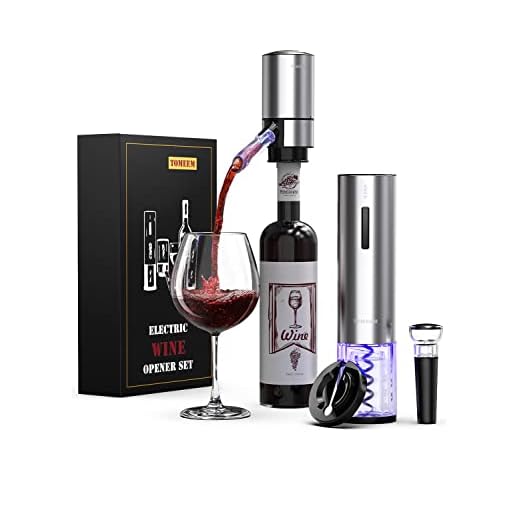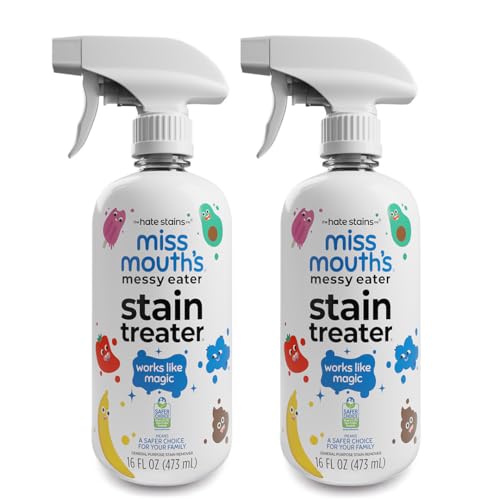



For optimal enjoyment, exposing this beverage to air can enhance its profile significantly. Many enthusiasts find that allowing it to breathe reveals subtler notes, making the tasting experience more enjoyable. In my experience, a brief period of oxygen exposure can soften sharp acidity and allow floral and fruity aromas to flourish.
Using a decanter is an excellent method to facilitate this process, allowing the liquid to come into contact with more air. Pouring the drink into a glass and swirling it gently can also achieve similar results. I recommend letting it sit for about 15 to 30 minutes to fully appreciate the changes in flavor and aroma.
Not all varieties benefit equally from this practice. Lighter styles often gain the most from aeration, as they can sometimes present a tighter profile when first poured. By allowing them to interact with the atmosphere, you can unlock their full potential and discover new dimensions in taste.
White Varietals and Aeration
Aeration can enhance the qualities of certain grapes, but it’s not always mandatory for lighter styles. For crisp and fruity selections, such as Sauvignon Blanc or Pinot Grigio, immediate enjoyment is often preferable. These wines typically showcase their best characteristics right after opening, with bright acidity and fresh fruit flavors that don’t necessarily benefit from exposure to air.
On the other hand, fuller-bodied types, like Chardonnay, particularly those that are oaked, may develop more complexity with brief oxygen exposure. Pouring these into a decanter or letting them breathe in the glass for 15 to 30 minutes can soften their profiles and reveal richer nuances. Always taste first; if it seems tight or closed, a little air can help.
Temperature plays a significant role as well. Serving chilled allows the aromas to concentrate, while slight warming can assist in unfolding layered scents. It’s wise to experiment with each bottle, as individual expressions vary widely based on region, vintage, and winemaking techniques.
Remember, the goal is to enhance your experience. Enjoying these varietals at their peak often means paying close attention to how they evolve in your glass. Every pour offers a chance to discover something new.
Understanding the Basics of Aeration
Aeration enhances the sensory experience of beverages by introducing oxygen to them. This process can soften harsh tannins and elevate aromatic profiles, contributing to a smoother palate. For lighter varietals, the approach to aeration differs from that of their heavier counterparts.
Common Methods of Aeration
Employing various techniques can yield different results. Here are some effective methods:
| Method | Description |
|---|---|
| Decanting | Pouring into a vessel separates the beverage from sediment and exposes it to air, allowing for rapid interaction. |
| Swirling | Agitating the liquid in the glass introduces oxygen, enhancing aroma and flavor. |
| Using an Aerator | Specialized devices that accelerate the aeration process by mixing air as the liquid flows through. |
Timing and Temperature
The duration of exposure to air can vary. For lighter options, a brief period of aeration, around 15-30 minutes, often suffices. Serving temperature plays a vital role; cooler temperatures may require slightly longer exposure to achieve the desired effect. Experimenting with these variables will help tailor the experience to personal preferences.
When to Consider Aerating White Wine
Aeration can enhance certain varieties, particularly those with more robust characteristics or oak aging. It’s beneficial to consider this technique for fuller-bodied options like Chardonnay or Viognier. Let them breathe for about 20-30 minutes before serving to allow aromas to develop.
Young vs. Mature Selections
Younger bottles can benefit more from exposure to air, as they often have tighter structures. A brief decanting can help soften their edges and reveal hidden layers. In contrast, mature choices typically require less aeration since their complexities are already expressed.
Food Pairings
If planning to pair a dish with a rich sauce or creamy elements, aerating the beverage can harmonize flavors, enhancing the overall experience. Consider this practice when serving seafood dishes or creamy pasta for optimal flavor integration.
In summary, select the right moments to aerate based on the style and age of the beverage, as well as the accompanying cuisine. Trust your palate and experiment to find what works best for your selections.
Methods for Aerating White Wine at Home
To enhance the flavor profile of your chilled beverage, consider using a decanter. Pour the liquid into a decanter and let it sit for 15 to 30 minutes. This process allows for greater exposure to air, which can help soften acidity and enhance aromas.
An alternative method involves using a wine aerator. These handy devices introduce air as you pour, instantly improving the taste. Simply place the aerator on the bottle’s neck and pour through it into your glass or carafe.
If you don’t have a decanter or aerator, try swirling the liquid in your glass. This action increases oxygen contact, promoting aromatic development. Just be cautious not to spill; a gentle swirl is sufficient.
For a quicker approach, you may also consider transferring the drink between two containers. Pouring back and forth a few times can mimic the aeration effect without specialized tools.
Lastly, remember to serve at the ideal temperature. Slightly warmer than fridge temperature can enhance the aromatic experience. Aim for around 45-50°F (7-10°C) to allow the flavors to shine without being overly chilled.
Impact of Aeration on Different Varieties of White Wine
Aeration can significantly affect the characteristics of various types of pale beverages. For instance, Sauvignon Blanc often exhibits enhanced aroma and taste profile when exposed to air, allowing its herbaceous qualities and citrus notes to flourish. I recommend allowing this variety to breathe for about 15-30 minutes before serving to achieve optimal results.
Chardonnay and Its Complexities
In the case of Chardonnay, particularly those that undergo oak aging, aeration can soften the impact of wood and integrate the flavors more harmoniously. A brief exposure to air, around 20 minutes, can help mellow the oak influence, revealing the fruit’s true essence.
Riesling and Floral Notes
Riesling, known for its aromatic profile, can benefit from gentle aeration. When allowed to interact with oxygen, the floral and fruity notes become more pronounced. I suggest decanting this varietal for 10-15 minutes to enhance its aromatic complexity and overall enjoyment.
Signs That Your Wine Is Ready to Drink
Look for clarity and brilliance in the liquid. A clear, bright appearance often indicates that the beverage has been properly handled and stored. Cloudiness or dullness can suggest age or improper storage conditions.
Aroma Profile
Assess the bouquet. When you swirl the glass, the aromas should be vibrant and inviting. Notes of fruit, floral, or mineral elements should be prominent without any off-putting scents. If you detect unpleasant odors, it may be a sign of spoilage.
Taste and Texture
- Take a small sip. The flavor should be balanced, with a pleasing acidity that refreshes the palate.
- Check for a smooth texture. Harsh tannins or unpleasant bitterness can indicate that the drink is not at its peak.
- Note the finish. A lengthy and enjoyable aftertaste is a good sign of quality.
Temperature is crucial as well. Ensure that the beverage is served chilled, typically between 45°F and 55°F. This enhances the aromas and flavors, making the experience more enjoyable.
If you’re ever in doubt about cleaning equipment for serving, I recommend checking out this guide on how do I use universal cleaner in karcher pressure washer. Proper tools make all the difference in serving your favorite selections.
Common Myths About Aerating White Wines
Many believe that all varieties of this beverage require exposure to air to enhance their flavors. However, this isn’t always the case. Understanding the nuances can help elevate your tasting experience.
- All types benefit from aeration: Not every selection improves with oxygen. Lighter styles often showcase their characteristics without needing this process.
- Long exposure is better: Some think that leaving a bottle open for hours dramatically improves the taste. In reality, excessive exposure can lead to loss of freshness and delicate aromas.
- Only expensive bottles need oxygen: While pricier selections may show more complexity, even budget-friendly options can shine without prolonged aeration.
- Decanting is always necessary: This method is not essential for all. Many varieties can be enjoyed directly from the bottle, retaining their original charm.
- All drinkers prefer aerated flavors: Personal preference varies. Some individuals appreciate the crispness of unexposed selections over those that have been aerated.
By debunking these misconceptions, you can make informed choices when selecting and enjoying your favorite beverages. Always trust your palate and experiment to discover what works best for you.
FAQ:
Does white wine benefit from aeration?
Aeration can enhance the flavors and aromas of white wine, but it is not always necessary. Some white wines, particularly those that are lighter and crisper, are usually enjoyed without aeration. However, fuller-bodied white wines, like oaked Chardonnay, can improve with exposure to air, which helps to mellow their acidity and bring out more complex flavors. The best approach is to taste the wine first and decide if it feels too tight or young, in which case a short aeration could be beneficial.
How long should I aerate white wine?
The time needed for aeration can vary based on the type of white wine. Generally, allowing the wine to breathe for about 15 to 30 minutes is sufficient for many fuller-bodied whites. You can pour the wine into a decanter or simply leave it in the glass. For lighter whites, such as Sauvignon Blanc, a shorter aeration time or none at all may be suitable. Tasting the wine periodically during aeration can help determine when it has reached the desired flavor profile.
What are the signs that white wine needs aeration?
If a white wine tastes overly sharp, acidic, or lacks depth, it may benefit from aeration. A wine that feels closed off or has muted aromas can also indicate that it needs some air. If you’re unsure, pour a small sample into a glass and let it sit for a few minutes; taste it again to see if the flavors have developed. Additionally, if the wine has a lot of oak influence, it might require aeration to soften the tannins and enhance its overall character.









